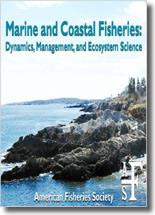Population monitoring of benthic species has been complicated by difficulties in defining appropriate spatial units for making observations that are relevant to the management of these fisheries. In many cases, this has led to the application of indirect models of stock evaluation using catch and effort information for estimating global quotas, in spite of the fact that experience suggests that limit reference points should be used. The aim of this study was to research the spatial distribution pattern of the Chilean sea urchin Loxechinus albus at sites identified as fishing beds through direct evaluation. Thus, video transect recordings were used and geostatistical methods were applied to determine the presence of significant spatial units. We found significant spatial structures represented by beds of 1–120 ha with 20,000–2,300,000 sea urchins that revealed fragmentation of the exploited L. albus populations within the study area. Smaller beds were observed close to the landing ports, suggesting that, in the extreme north of the study area, the beds were “in transition” toward becoming unoccupied habitats. This fragmentation is influenced by first-order (habitat availability) and second-order (principally fishing and recruitment) effects. The bed structure observed can be classified as mesoscale, where contraction and expansion dynamics operate. This can lead to persistence, extinction, and reemergence over periods that span more than a generation. Observing the expansion—contraction of these beds can, therefore, be extremely informative when interpreting population and large-scale fishery dynamics. Our hypothesis is that the structure of beds observed is associated with local fishery indicators and therefore can be used to monitor and improve management on a regional scale. This would be particularly useful for such complex regions as the Chilean inland sea, although the methodology requires further adjustment.
How to translate text using browser tools
16 March 2016
Using Drift Video Transects and Maximum Likelihood Geostatistics for Quantifying and Monitoring Exploited Subpopulations of Loxechinus albus at a Mesoscale
Carlos Molinet





